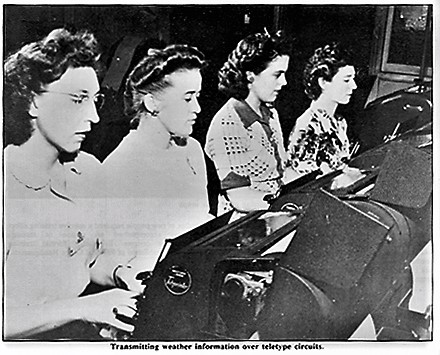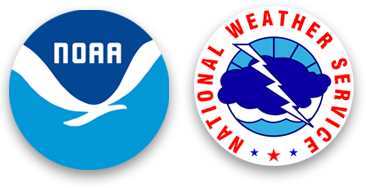Women in the Weather Bureau During WWII: Mary J.H. Williams - National Weather Service Heritage

Women in the Weather Bureau During WWII: Mary J.H. Williams
By NWS Heritage Projects Editorial StaffEditor's Note:The following first-person account of Mary J.H. Williams first appeared in Women of the Weather Bureau During WWII by Kaye O'Brien and Gary Grice, 1991.
I worked for the Weather Bureau from December, 1942 to October, 1947. My duty stations were at Reno and Winnemucca, Nevada, Tucson and Phoenix, Arizona. I learned about the Weather Bureau opening from a newspaper ad. I was looking for a more interesting job and the Weather Bureau opportunity came at that time.
I was a high-school graduate, and, before working for the Weather Bureau, I had been employed as an order and file clerk for Hallmark Company and a payroll clerk for an Arizona construction company.
I used the name of Hutsell when I started, then Williams after my marriage in 1947. I left the Weather Bureau in October, 1947 to return to school (Arizona State). To the best of my knowledge, my starting salary was around $100 a month and in 1947 when I resigned I made $2770 a year.
The Weather Bureau provided six weeks (six days per week) of training at the Weather Bureau school in Los Angeles, California, city office.
I was received with some reluctance and much skepticism at my first station. After that I was received well. My first impression of the Weather Bureau was that employees were very dedicated to the job. I was impressed with the accurate information given to pilots and the general public. On-station morale was generally good.
My duties included observations, PIBAL, map plotting, equipment maintenance, climatology recording; in Winnemucca - teletype use; in Phoenix - RAOB and Adiabatic charts.
Shifts were mostly round the clock on a rotating basis in Reno and Phoenix; in Tucson, mostly evening and midnight; in Winnemucca, night shift. I worked eight hours a day (except in Winnemucca where it was ten hours). At first we worked a 48-hour week. This changed, before I left, to a 40-hour week. There were five or six other persons working at the duty station in Reno, two in Winnemucca, five in Tucson and eight or nine in Phoenix.
The only low point that I remember from my Weather Bureau career was being sent to Reno as my first duty station instead of Phoenix as I had expected. Being transferred to Tucson was definitely a high point, as well as being promoted from Observer to Meteorological Aide. Looking back, I think there were more advances made and the Bureau greatly upgraded during World War II? Would I do the same work again? Yes. I feel it is a needed service and it is also very challenging since it is always changing.
In working for the Weather Bureau during World War II, we released men to enter the service, and by proving our capabilities it opened the door to women in the field of meteorology. There were some interesting experiences. All the Weather Bureau staff in Phoenix had a chance to fly in the Goodyear blimp when they tied down for several days. The pilots received weather information from our office and thought we would enjoy a ride. It was an exciting experience. I remember one time in Tucson when, due to vacancies and illness, the staff fell to three (including the Meteorologist in Charge) which meant we had no days off and I filled the swing shift for over a month. Needless to say, we were greatly relieved when we got back to a full complement again.
At the Phoenix office we were plagued by black widow spiders, which we got used to, but one day I almost panicked when I started to reach into the thermometer shelter to moisten the wet bulb and found a spider sitting on the water cup. Since time was important to get the observation out I decided to dispatch the spider by spraying him to death with fly spray. It worked and the observation was in on time.
